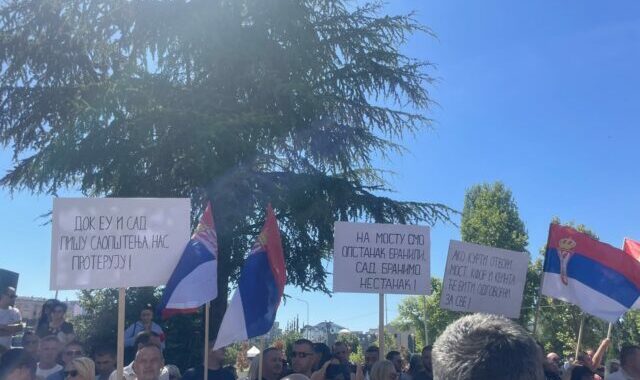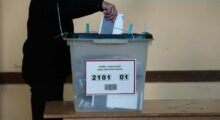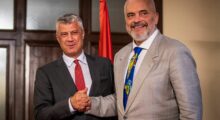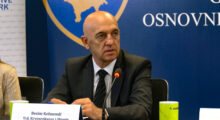Hundreds of Serbs protested on Wednesday against the Kosovo government’s move to open the main bridge in Mitrovica, which divides the Serb-dominated north and Albanian south of the city.
The planned reopening of the bridge for vehicle traffic has sparked a new row between the government and its Western allies, who want the issue resolved as part of the EU-mediated Belgrade-Pristina dialogue in Brussels rather than in a unilateral move by Prime Minister Albin Kurti’s government.
Nikola Kabasic, a former judge who resigned in November 2022 together with other Serbian officials from the north, said the security of Serbs in northern Kosovo was “at stake” and called on the international community to protect the community. “Our suffering is collective. We have been attacked as a people,” Kabasic said.
He invited the protesters to raise their hands if they are in favour opening the bridge. When no one responded positively, he invited them to raise their hands if they are against. Once all of them did, he addressed the media: “Record this, dear journalists. This is the most democratic expression of the will of people who live in the north,”
Serbian authorities condemned Kosovo’s latest initiative as an attempt “to provoke conflict”.
PM Kurti responded on X on Tuesday, saying that “with false allegations that Albanians are marching over the bridge, Serbia’s President Aleksandar Vucic aims to create an atmosphere of fear and elicit a reaction from KFOR [peacekeepers] in Mitrovica, threatening that if they do not respond, Serbia will.
“No Albanians are marching over the bridge, as he [Vucic] falsely claims. All plans to open the bridge have been intended to foster peaceful interaction between the two communities,” Kurti said.
On Tuesday, the government hired an engineering company to conduct technical inspections in and around the bridge.
NATO’s peacekeeping force, KFOR, said it had been informed about the tests. It said it will maintain a fixed presence on the bridge and will “continue to conduct regular patrols in the surrounding areas to ensure stability and security, for the benefit of all local communities.
“We will not hesitate to tackle any development that may affect the security environment and regional stability, in full respect of our UN mandate,” it added.
The bridge was a topic in the EU-facilitated dialogue between Kosovo and Serbia in 2015. An agreement reached in 2016 said that “the bridge will be opened for all traffic on 20 January 2017”.
The head of the OSCE Mission in Kosovo, Michael Davenport, said on Wednesday that recent events in the Serb-majority north “have underlined the urgency of returning to dialogue.
“Both these issues should be resolved in the EU-led process. But this must be dialogue focused once again on improving the lives of ordinary people in Kosovo and enhancing the prospects for young people from all communities to live, work and raise their families here,” Davenport posted on X.
























